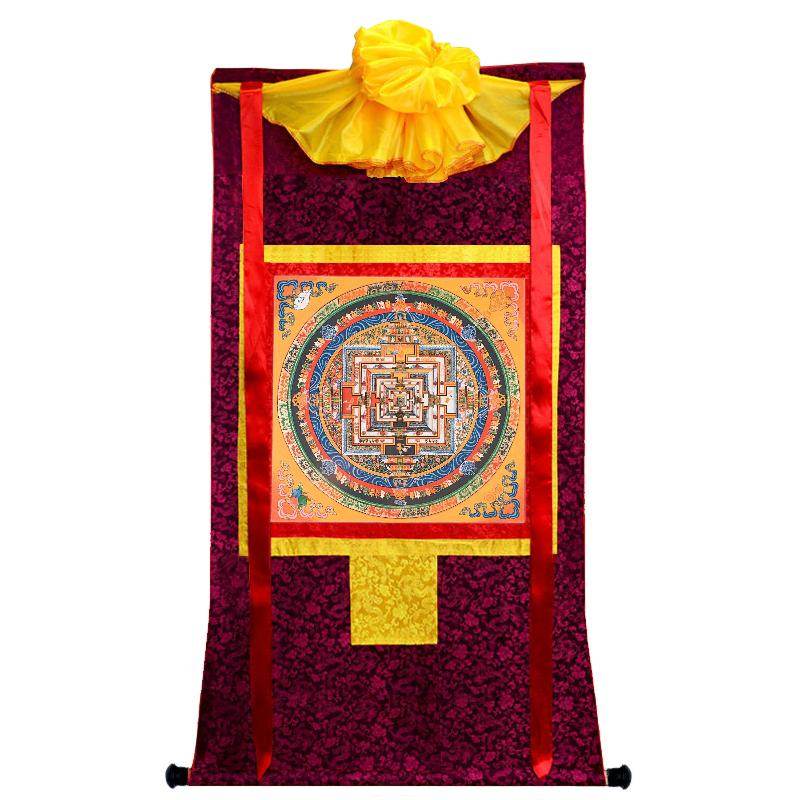Navagraha Mandala Hand Painted Thankga
Navagraha Mandala Hand Painted Thankga
Couldn't load pickup availability
❤This hand painted mandala thangka is drawn with a pious heart,you can see the process of its completion step by step. It comes from the Nepal,and use the traditional Tibetan mounting method traditional, REAL Tibetan Art. All our hand painted thangkas are directly from Nepal. When you purchase this craft it helps and support the artisan and their families in there. Your support is highly appreciated. ❤Details Material: cloth, silk,canvas,Tibetan Paper The front is covered with silk to protect Thangka With exquisite wooden painting shaft and lanyard ❤Size & Weight Frame :70cm(top) *85 cm(bottom) * 120cm(Height)(about 28" * 33" * 47") Core: 50cm(Width) *50 cm(Height) (about 19.6" * 19.6") ❤DESCRIPTION Gandhanra Hand Painted Mandala Thankga,Tibetan Buddhist Tapestry,Buddhist Printing Art From Nepal A mandala is a geometric configuration of symbols. In various spiritual traditions, mandalas may be employed for focusing attention of practitioners and adepts, as a spiritual guidance tool, for establishing a sacred space and as an aid to meditation and trance induction. In the Eastern religions of Hinduism, Buddhism, Jainism and Shintoism it is used as a map representing deities, or especially in the case of Shintoism, paradises, kami or actual shrines.A mandala generally represents the spiritual journey, starting from outside to the inner core, through layers. In spiritual or religious process, a mandala is a period of approximately 40 days in which time the human system completes one physiological cycle. In Hinduism, a basic mandala, also called a yantra, takes the form of a square with four gates containing a circle with a center point. Each gate is in the general shape of a T.Mandalas often have radial balance. A yantra is similar to a mandala, usually smaller and using a more limited colour palette. It may be a two- or three-dimensional geometric composition used in sadhanas, puja or meditative rituals, and may incorporate a mantra into its design. It is considered to represent the abode of the deity. Each yantra is unique and calls the deity into the presence of the practitioner through the elaborate symbolic geometric designs. According to one scholar, "Yantras function as revelatory symbols of cosmic truths and as instructional charts of the spiritual aspect of human experience" Many situate yantras as central focus points for Hindu tantric practice. Yantras are not representations, but are lived, experiential, nondual realities. As Khanna describes: Despite its cosmic meanings a yantra is a reality lived. Because of the relationship that exists in the Tantras between the outer world (the macrocosm) and man's inner world (the microcosm), every symbol in a yantra is ambivalently resonant in inner–outer synthesis, and is associated with the subtle body and aspects of human consciousness.[6 The term 'mandala' appears in the Rigveda as the name of the sections of the work, and Vedic rituals use mandalas such as the Navagraha mandala to this day. ❤NOTICE 1.This thangka is made to order, it will takes about 5 days to complete and ship. 2.Please allow 1-2cm error due to manual measurement. 3.The color may have different as the difference display. Please make sure you do not mind before you bid.














